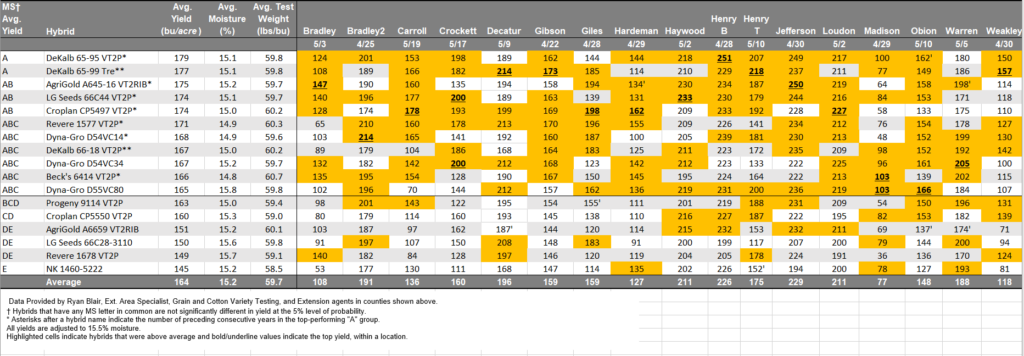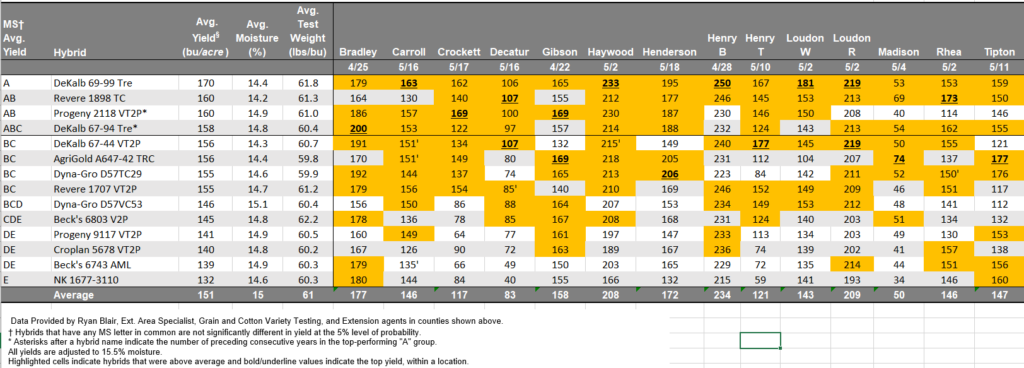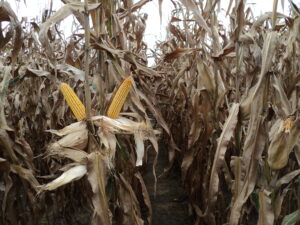Recent Updates
2022 Corn Grain Hybrid Tests in TN – Now Available
Results from the 2022 TN corn grain hybrid trials are now available as both pdf and excel files. Sixty hybrids were evaluated in small plot replicated trials (REC) at eight locations and fifty-one hybrids were evaluated as non-replicated large strip plots (CST) in thirteen to seventeen locations. A summary of hybrids that were in the “A group” (not statistically different from the top yield within each test) in either the REC or CST trial can be found here – 2022 corn A table.
County Standardized Trials Corn Data
Yield data from our County Standardized Corn Trials are in. With extended drought and heat, much of our corn was stressed and decreased yields were common. While we did experienced areas of low yields, having a high number of locations serving as replications allows for a high confidence level statistically.
These CST plots are large strip trials located ‘on-farm’ with a minimum of 300 feet in length. Inputs and management decisions are on a by location basis and determined by the cooperating producers. Three relative maturity groups divide the trials, Early Corn will be 113 day and earlier, Medium Corn will be 114-116 day, and Full Corn is 117 day plus.
Below are the results for our 3 RM groups. Click on the table to open a PDF of these tables. These results can also be accessed on https://search.utcrops.com/ 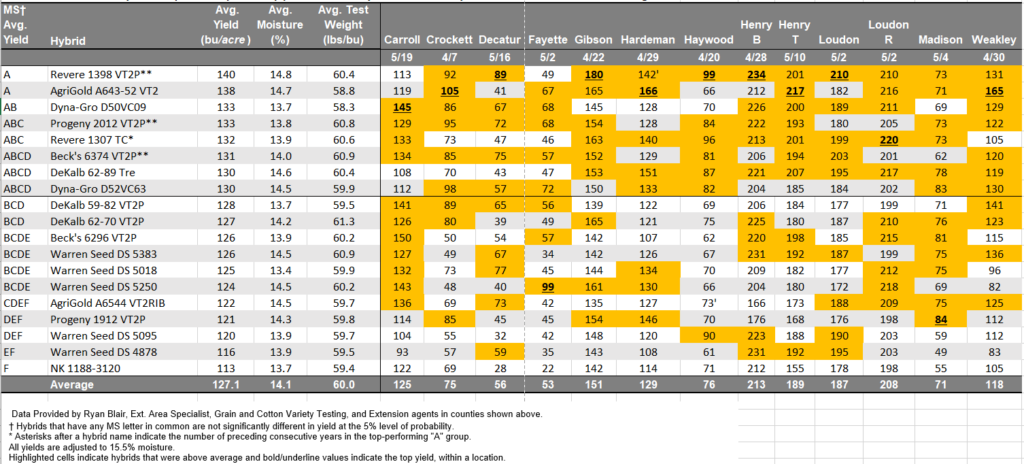
Thank you to everyone involved in making this program happen. It wouldn’t be possible without all the County Agents, Cooperating Producers, Seed Industry Representatives, and others involved.
What to expect as temps drop into the 30s, boll opening and boll maturity hereon
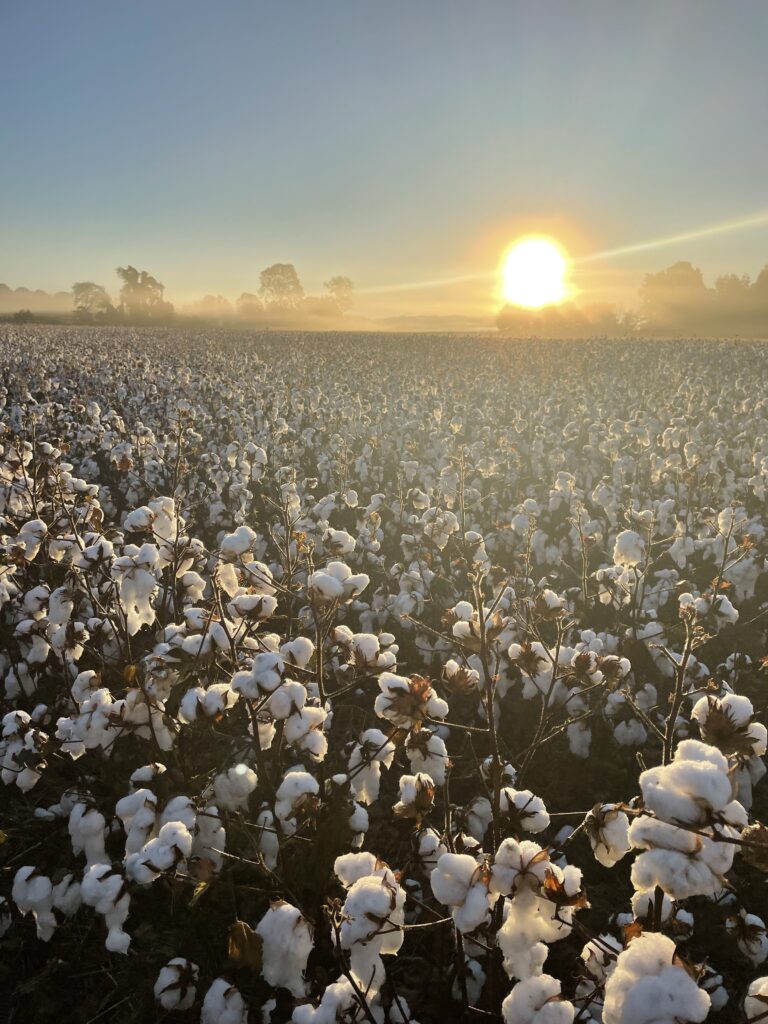 Conversations this week have centered on the forecast lows over the coming weekend, boll maturation at temperatures averaging below 60F, and slow activity of defoliants and boll openers. In this blog, I briefly tackle each of these issues. Continue reading
Conversations this week have centered on the forecast lows over the coming weekend, boll maturation at temperatures averaging below 60F, and slow activity of defoliants and boll openers. In this blog, I briefly tackle each of these issues. Continue reading
New Regulation on Atrazine Public Comment Period Closes October 7.
The Environmental Protection Agency (EPA) has proposed additional mitigations and regulations on the use of atrazine. The open comment period will close this Friday October 7. If you are interested in commenting see this link. I know that it is a very busy time of year but please consider making a comment on this topic. You all are the experts since you steward this herbicide, on many acres, each spring and your comments have more value than many that are sent. Continue reading
Weed Management Report Card 2022
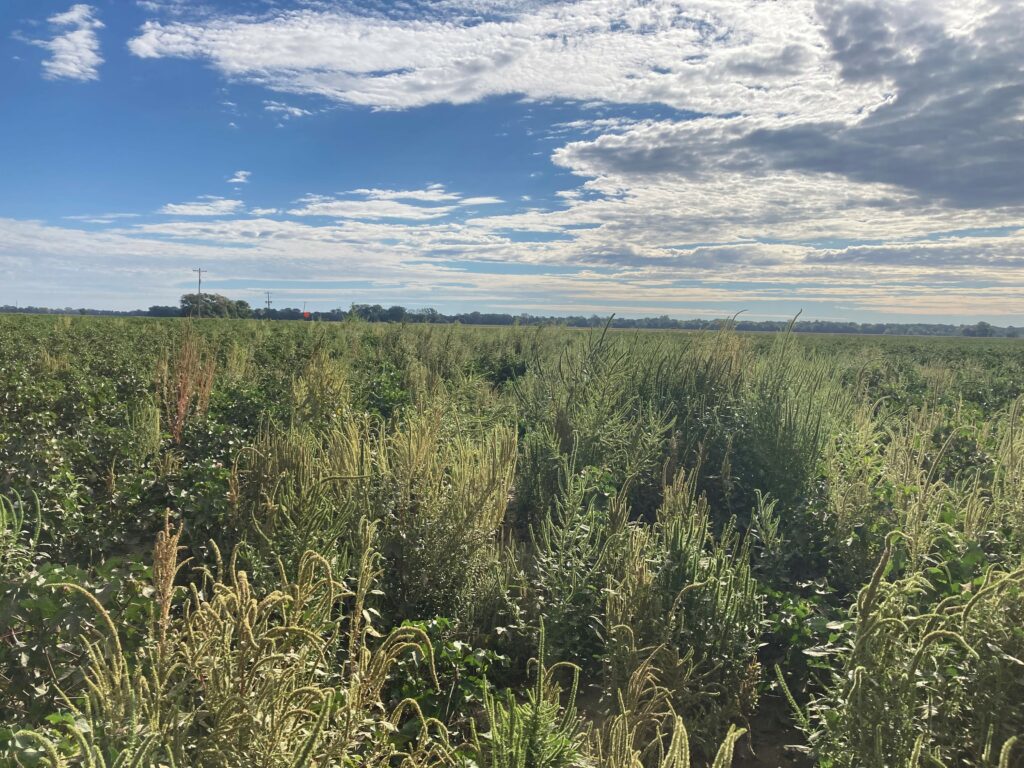
Every fall we travel around the state and observe the overall success or failure of weed control in our row crops. From the Palmer amaranth standpoint a few too many fields look like a failure. Particularly, from Gibson county across to Lauderdale county cotton and soybean fields ranged from clean fields to fields with more weeds than one would like (Picture 1) to completely grown up pigweed messes (Picture 2). Continue reading
Defoliation thoughts as we move into October
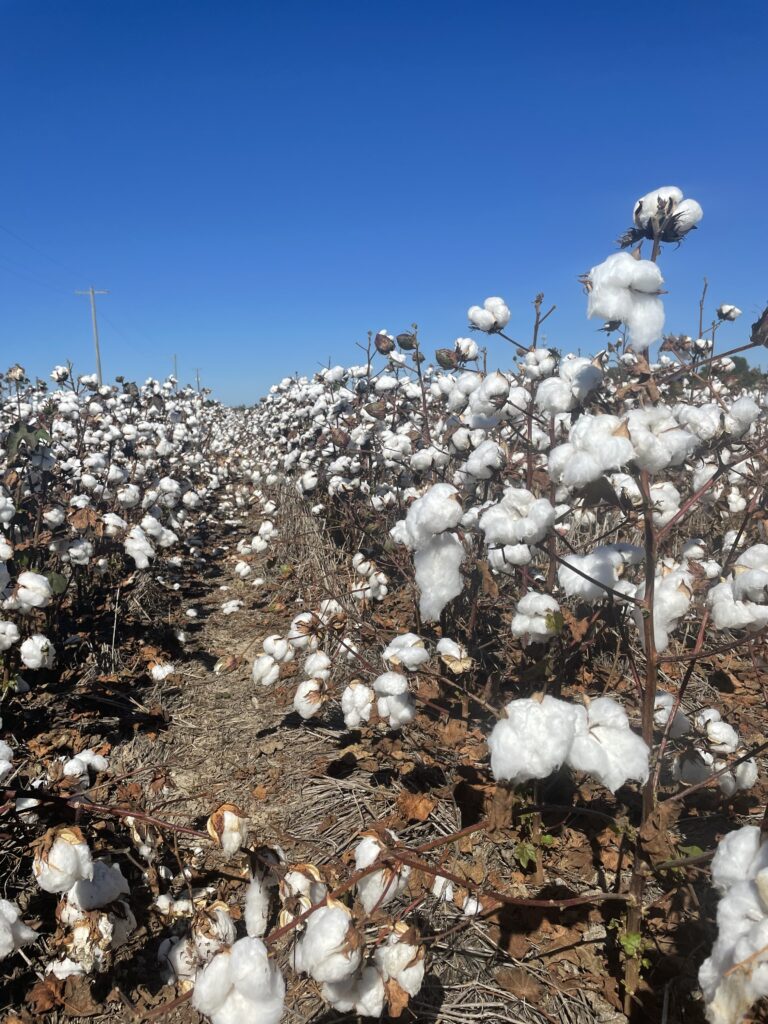 This has been a big week for defoliation. Most of the calls have consisted of one or two questions. First, how long should I wait on acres that are nowhere near ready and second, what is the concoction when the weather is this cool? In this blog, I share a few thoughts on timing and some results from a strip trial we completed in cool conditions during 2020.
This has been a big week for defoliation. Most of the calls have consisted of one or two questions. First, how long should I wait on acres that are nowhere near ready and second, what is the concoction when the weather is this cool? In this blog, I share a few thoughts on timing and some results from a strip trial we completed in cool conditions during 2020.
Cover Crop Variety Trial 2022 report now available
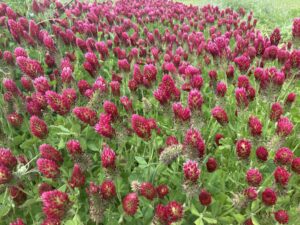 Our 2022 cover crop variety trial results are in! If you are thinking about putting in a cover crop this fall, check out which varieties and mixes did best. Entries were evaluated in both an early and late planted trial (early Oct., early Nov.) and under two termination timings (early Apr., early May). In addition to information on biomass, our report has data on which cover crops provided the best canopy cover throughout the season, estimated nitrogen release to the succeeding cash crop, and forage characteristics for those interested in grazing their covers. 21-22 TN Cover Crop Variety Test Report
Our 2022 cover crop variety trial results are in! If you are thinking about putting in a cover crop this fall, check out which varieties and mixes did best. Entries were evaluated in both an early and late planted trial (early Oct., early Nov.) and under two termination timings (early Apr., early May). In addition to information on biomass, our report has data on which cover crops provided the best canopy cover throughout the season, estimated nitrogen release to the succeeding cash crop, and forage characteristics for those interested in grazing their covers. 21-22 TN Cover Crop Variety Test Report

